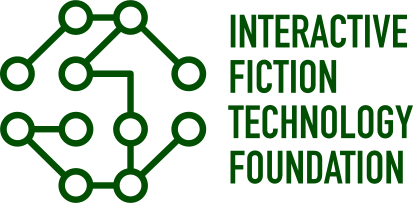(Note: this is a continuation of an 8-yr-old series examining the XYZZY Best Winners one at a time. I hope to finish it by the 24th, but if not I’ll likely finish it mid-August).
This series contains major spoilers for each game in the series.
Superluminal Vagrant Twin was a large parser game released in 2016 outside of all comps and to little fanfare. In the eight years since then, it has won the XYZZY Award for Best Game and rocketed to the 4th place overall in all of IFDB.
What makes it good?
Breadth
Pacian calls the game ‘broad, but shallow’. And ‘broad’ is a good term. You play as the captain of a small ship whose brother has been sold to the space mob, and you have to somehow scrounge up $5,000,000 before you can get him free. You only have enough fuel to head to one more system, and you have 0 cash.
From there, gameplay slowly spreads out in a well-paced reveal of more and more options and planets. Each planet has a variety of people or shops or mysterious items you can collect. Different people mention different worlds, which you can then type in to visit. There are dozens of planets, and many are completely optional (in fact, I wonder if you can just repeat the first money-making method 5000 times to pay off the loan. I don’t want to find out!)
Planet-finding is one of the key systems of the game. There’s no master list of names you’ve found, only ones you’ve visited or specifically recorded.
This breadth could easily become overwhelming, but there are numerous systems to keep things simple. Your passenger, Aurea, will nudge you towards your next goal if talked to. A map of visited planets can be augmented by your own overheard planet names. A ship’s log keeps track of who wants to sell things and who wants to buy.
Flawless implementation
In the quote above, Pacian called the game ‘broad, but shallow’. What does the shallow mean?
This is technically a limited parser game. I say ‘technically’ because your freedom to type in is much greater than, say, Eat Me or Inside the Facility. The only big limitation is EXAMINE, which has been reduced. Instead, you can TALK to almost anything.
The limited set of commands and freedom from writing descriptions allowed the author to make this game, as far as I have found, bug-free. And it’s smooth, too. If I want to race, and don’t remember the planet, but do remember the name of the race-runner is Silver, you can JUMP TO SILVER and the game takes care of the planet name.
Organic storytelling
This game does have a strong storyline, although it may not seem like it at first. Considering that you just need $5,000,000, and can grind several money sources, you can complete the game without going into any greater depth.
But your first passenger, Aurea, has a consistent thread leading her home. And it happens in an ‘organic’ way. Emily Short has a great essay called Plot-shaped Level Design, where she says:
Your job is to make it as hard as possible for the player to finish your game without understanding your story.
If you need the player to remember something, give them a choice about that thing. If you can’t let them choose whether the thing happens, you can still let them choose how it happens, or how the protagonist feels about it, or what they’re able to salvage from it.
Pacian has long been known for vivid, alien worlds with well-written characters. Each planet and system has its own story. They can be visited in almost any order.
But the main storyline progresses along a few well-defined paths. Like Emily Short suggests, you can’t progress without understanding the story. The worlds that advance the story most are easy to find from the last part of the story and almost impossible to find any other way. But the player can choose when to encounter them, and in many ways how to react to them; the final piece of the puzzle needed to get to the ending can be obtained in many ways (salvaging a ship, tracking down an old friend, etc.).
This organic nature of the overall storytelling, driven at the player’s preferred pace, makes it more memorable than the majority of games.
Outside of the main storyline, the worlds are painted in broad strokes that give you some concrete details to work with (amalgs can have nuclear reactors for hearts, and so can you!) but leave enough to the imagination that the world feels even bigger than it really is.
Conclusion
Superluminal Vagrant Twin has reached the extreme heights of IF popularity in this community, outranking every IFComp game on IFDB despite its humble release. Its popularity can’t fully be explained by any metrics or individual components, but it was definitely helped by its impeccable polish, its self-guided story pacing, its larger-than-strictly-needed world, and its vivid worldbuilding.
Made with the support of the Interactive Fiction Technology Foundation
